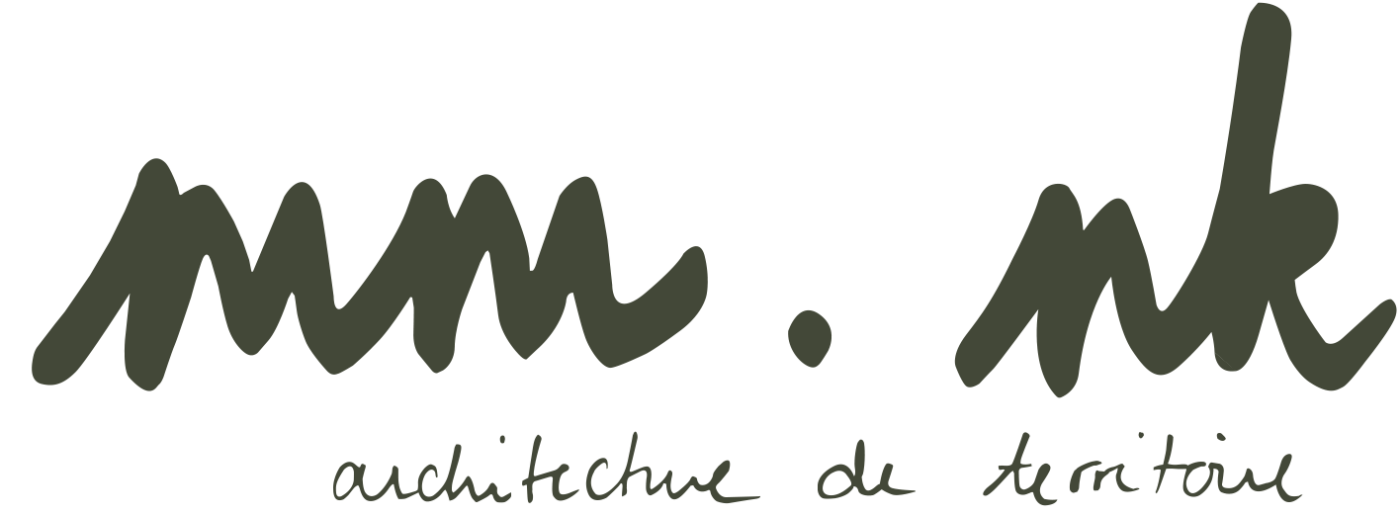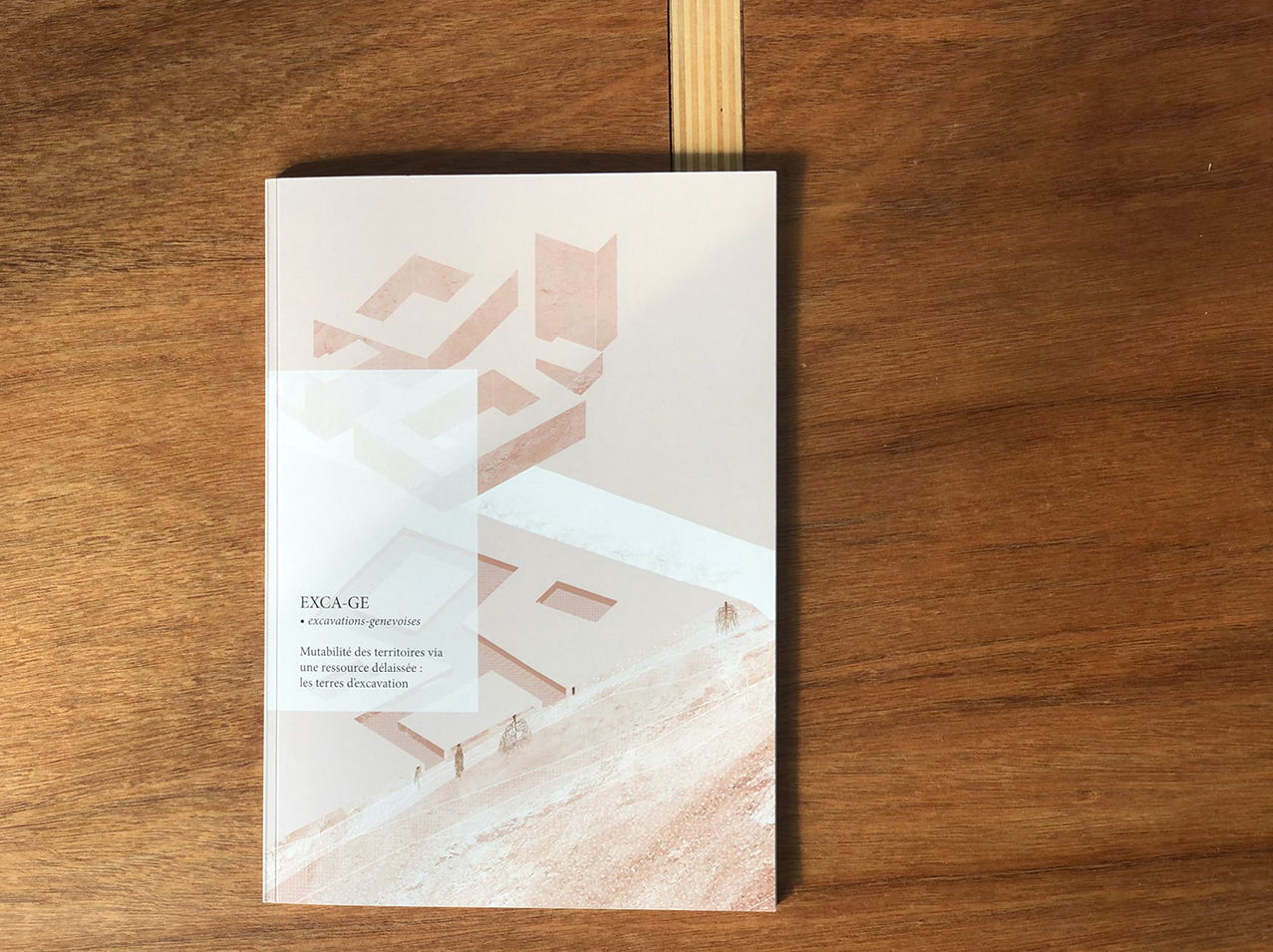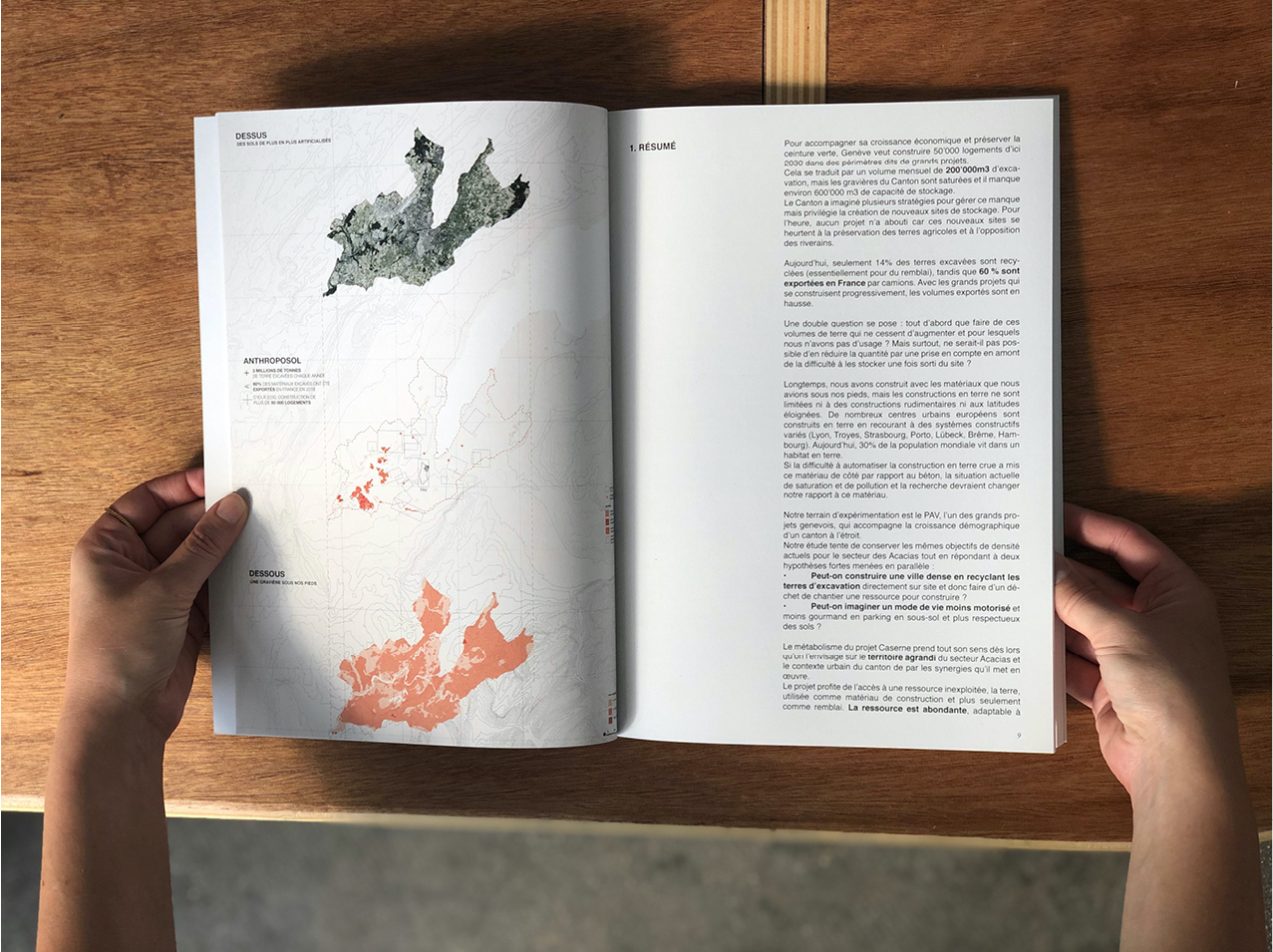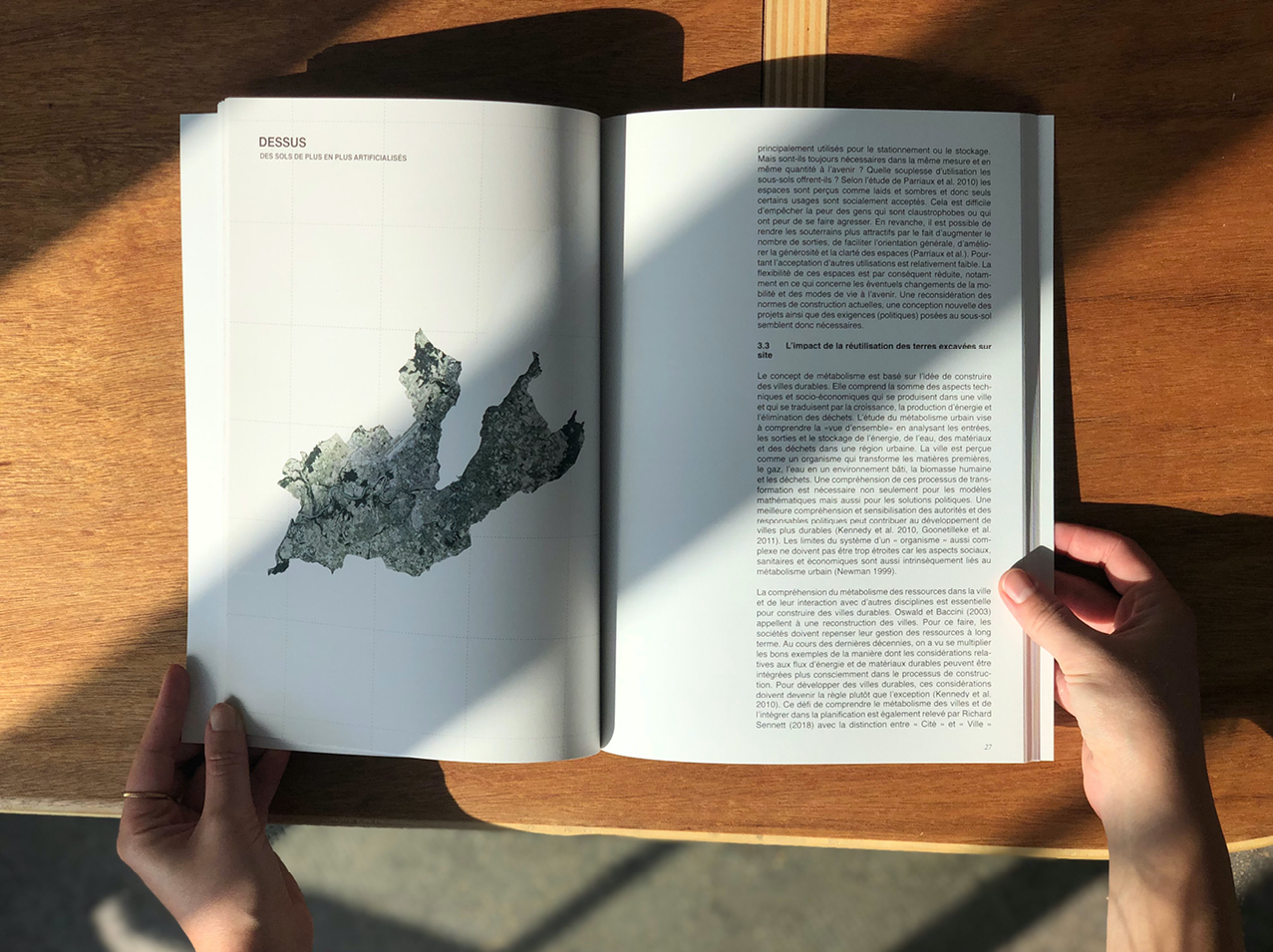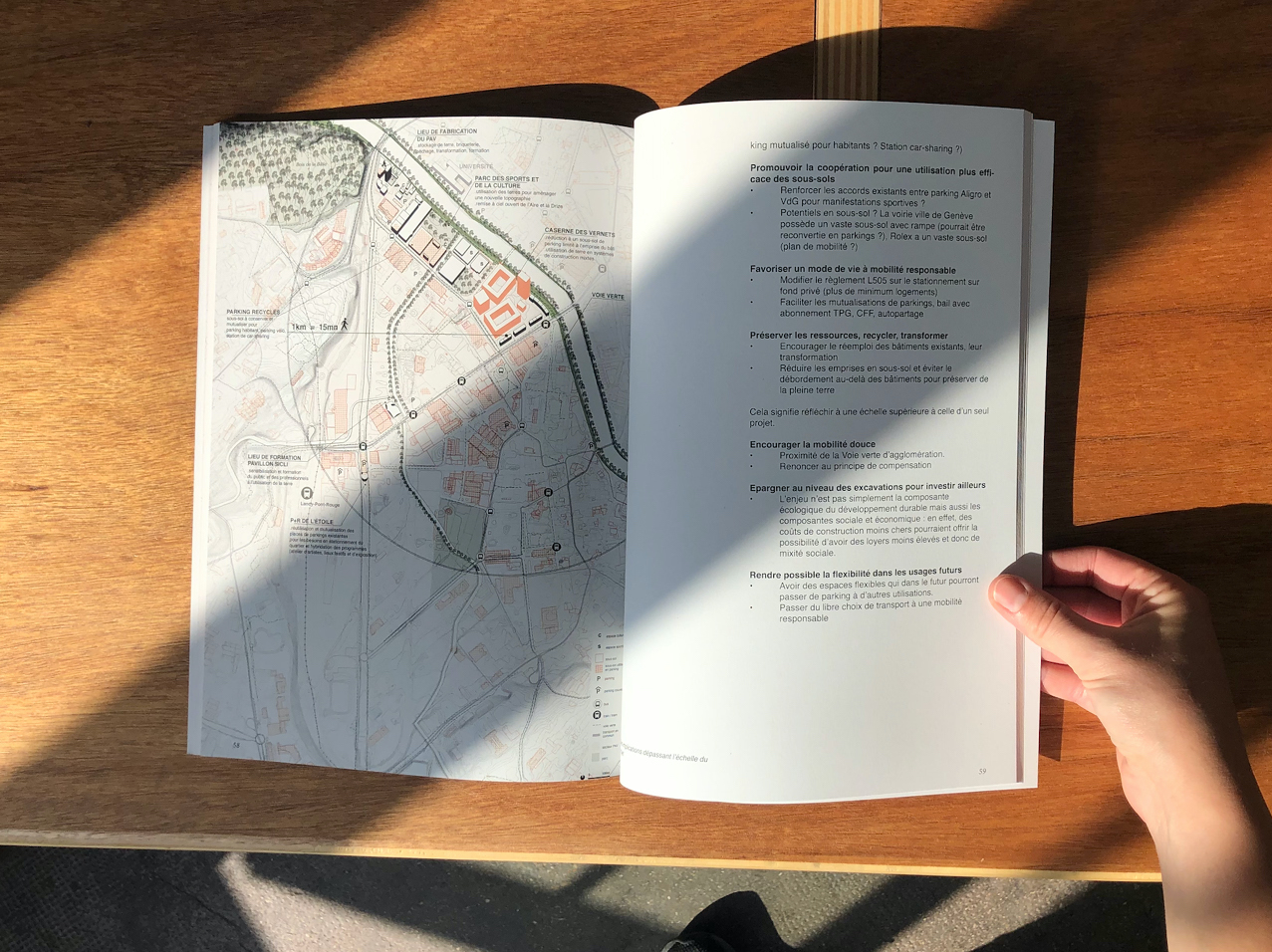CH. Geneva
Geneva Excavation
Research
46°11’34.9″N
6°08’10.1″E
To support its economic growth and preserve the green belt, Geneva wants to build 50,000 housing units by 2030 in so-called major projects.
This translates into a monthly volume of 200,000m3 of excavation, but the Canton’s gravel pits are saturated and there is a shortfall of space of around 600,000 m3.
Today, only 14% of excavated soil is recycled (mainly for backfill), while 60% is exported to France by truck. With the major projects that are gradually being built, export volumes are on the rise.
A twofold question arises: first of all, what to do with these ever-increasing volumes of earth for which we have no use?
But above all, wouldn’t it be possible to reduce the quantity by taking into account the difficulties of storing them once they are removed from the site?
For a long time, we built with the materials we had under our feet, but earthen constructions are not limited to rudimentary constructions or remote latitudes.
Many European urban centres are built in earth using a variety of building systems (Lyon, Troyes, Strasbourg, Porto, Lübeck, Bremen, Hamburg). Today, 30% of the world’s population lives in mud housing.
If the difficulty to automate construction in raw earth has set this material aside from concrete, the current situation of saturation and pollution, and research should change our relationship with this material.
The testing ground for this study is the PAV, one of Geneva’s major projects, which accompanies the demographic growth of a cramped canton.
Our study attempts to maintain the same density objectives for the Acacia sector while responding to two strong hypotheses carried out in parallel:
– Is it possible to build a dense city by recycling excavated soil directly on site and thus turning construction site waste into a resource for building?
– Can we imagine a less motorised lifestyle with less underground parking and more respectful of the soil?
The metabolism of the Caserne project takes on its full meaning when viewed in the enlarged territory of the Acacias sector and the urban context of the canton through the synergies it implements.
The project benefits from access to an unexploited resource, the raw earth, which is used as a building material and not just as fill. The resource is abundant, adaptable to different uses and offers many advantages in terms of the quality of the spaces produced by limiting heat island effects in particular.
The project is made possible by the creation of temporary storage and processing facilities in unused industrial buildings for the preparation of building materials from excavated material. This material can become a tool for the transformation of the neighbourhood, benefiting multiple projects, ranging from construction to the interior decoration of spaces or the development of new parks. Upstream strategic planning is necessary to assess the future demand and availability of building materials.
By planning a coordination of parking spaces in the district, the Casernes project could reduce its parking spaces to a single level, but above all limit itself to the space under the building to leave the possibility of planting in the courtyards. This reduction in the volume of excavation would save millions of francs, which could be reinvested in the purchase of public transport subscriptions for the inhabitants and lower rents.
The mutability of territories through soil resources is therefore part of a broader approach, of changes in habits: design taking into account the existing to be recycled, incentive policy in calls for tenders, hybrid construction, circular economy, planning of the post-car society.
To make this possible, the federal and cantonal governments have an important role to play in changing the rules of the game, mobilising all the players, and setting up incentive systems and training courses.
Client
Ville de Genève
Team
Katia Naouri (architecte - urbaniste, mmnk), Albane Ferrari (urbaniste, Ville de Genève), Alexandra Nievergelt (géographe, CFF), Olivier Mahé (ingénieur, Erne)
Location
CH. Geneva
Program
research, territory, landscape, ressource, planification
Mission
Urban study for the Master of Advanced Study in Urbanism - EPFL and Université de Genève
Delivery
June 2020
Illustration
Katia Naouri (mmnk)
